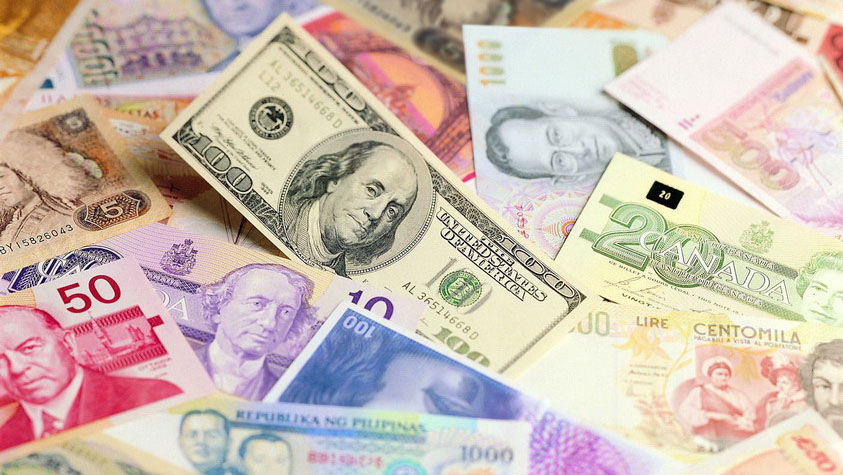The Concept of Financial Derivatives
Financial derivatives are specialized financial instruments whose value is derived from the performance of an underlying asset or variable, such as stocks, bonds, currencies, or commodities. Essentially, their price depends on the fluctuations of these underlying assets. Investors use financial derivatives to manage risks or speculate on future price movements without having to directly purchase the asset itself.
In the world of finance, financial derivatives are linked to a wide variety of underlying products, including spot financial instruments like stocks, bonds, and currencies. These derivatives are also influenced by variables like interest rates, exchange rates, inflation, asset prices, and credit ratings. They are formalized through contracts that define key terms such as the type of transaction, price, quantity, and the timing and location of delivery.

Types of Financial Derivatives
Financial derivatives come in various forms, each designed to meet specific trading needs and strategies. Understanding the different types is crucial for investors and traders looking to leverage these instruments effectively.
1. Forwards
Forwards are customized contracts between two parties to buy or sell an asset at a predetermined price on a specified future date. Unlike standardized futures contracts, forwards are not traded on exchanges; instead, they are negotiated privately in the over-the-counter (OTC) market. This customization allows parties to tailor the terms to fit their specific requirements, such as the quantity of the asset or the delivery date. However, this flexibility comes with increased counterparty risk, as the parties involved must trust each other to fulfill the contract at maturity.
2. Futures
Futures contracts are similar to forwards but are standardized and traded on regulated exchanges. This standardization means that futures contracts specify the quantity and quality of the underlying asset, as well as the delivery date. Futures are used by investors to hedge against price fluctuations or speculate on future price movements. Because they are traded on exchanges, futures come with reduced counterparty risk, as the exchange acts as an intermediary, guaranteeing the trade. This liquidity makes futures contracts popular among traders looking for efficient ways to gain exposure to various markets.
3. Options
Options give the buyer the right, but not the obligation, to purchase (call option) or sell (put option) an asset at a predetermined price before or on a specified expiration date. This flexibility makes options particularly appealing for investors looking to hedge risks or capitalize on anticipated price movements without committing to a direct purchase. For example, an investor may buy a call option on a stock if they believe its price will rise, allowing them to buy the stock at the lower strike price even if the market price increases. Conversely, put options can be used to protect against potential losses if the price of an asset declines. Options can be complex instruments, with various pricing models, such as the Black-Scholes model, used to determine their value.
4. Swaps
Swaps are agreements between two parties to exchange cash flows based on different financial instruments. The most common types of swaps include interest rate swaps and currency swaps. In an interest rate swap, one party pays a fixed interest rate while receiving a variable rate, and vice versa. This can help organizations manage their interest rate exposure, allowing them to convert fixed-rate debt into floating-rate debt or vice versa. Currency swaps involve exchanging principal and interest payments in different currencies, which can be advantageous for companies with international operations or exposure to foreign exchange risks. Swaps are typically negotiated OTC and can be highly customized to fit the specific needs of the parties involved.
5. Credit Derivatives
While not always included in standard lists of derivatives, credit derivatives deserve mention due to their significance in risk management. These instruments allow investors to transfer the credit risk associated with an underlying asset. One of the most well-known types of credit derivatives is the credit default swap (CDS), which acts as insurance against the default of a borrower. If the borrower defaults, the seller of the CDS compensates the buyer for their losses, providing a mechanism for managing credit risk.
Key Characteristics of Financial Derivatives
Intertemporal Nature: Financial derivatives are inherently forward-looking. They allow investors to speculate on future movements of market variables like interest rates, exchange rates, or stock prices. These contracts typically settle at a future date, meaning their impact on cash flow is often realized in the future.
Leverage: One of the most significant features of financial derivatives is leverage. With a small amount of capital, investors can control large positions, which amplifies both potential gains and losses. A slight movement in the underlying asset can result in a disproportionately large impact on the value of the derivative, making it both powerful and risky.
Close Linkage to Underlying Assets: The value of a financial derivative is directly tied to its underlying asset. For example, if you're holding a derivative based on a stock, its value will fluctuate in sync with the stock's price. This linkage can be linear, like with a forward contract, or more complex, as seen with options.
High Risk: Financial derivatives come with substantial risk due to their dependence on the future prices of underlying assets. Market volatility, incorrect predictions, or unexpected events can lead to significant gains but also sharp losses. The higher the leverage, the greater the risk.
Conclusion
Financial derivatives are essential tools in the world of finance, allowing investors and institutions to hedge risks, speculate on market movements, and gain exposure to assets without direct ownership. However, their complex nature and high leverage also make them riskier than traditional investments. By understanding their classification, key characteristics, and the way they operate, investors can make more informed decisions when using financial derivatives.







